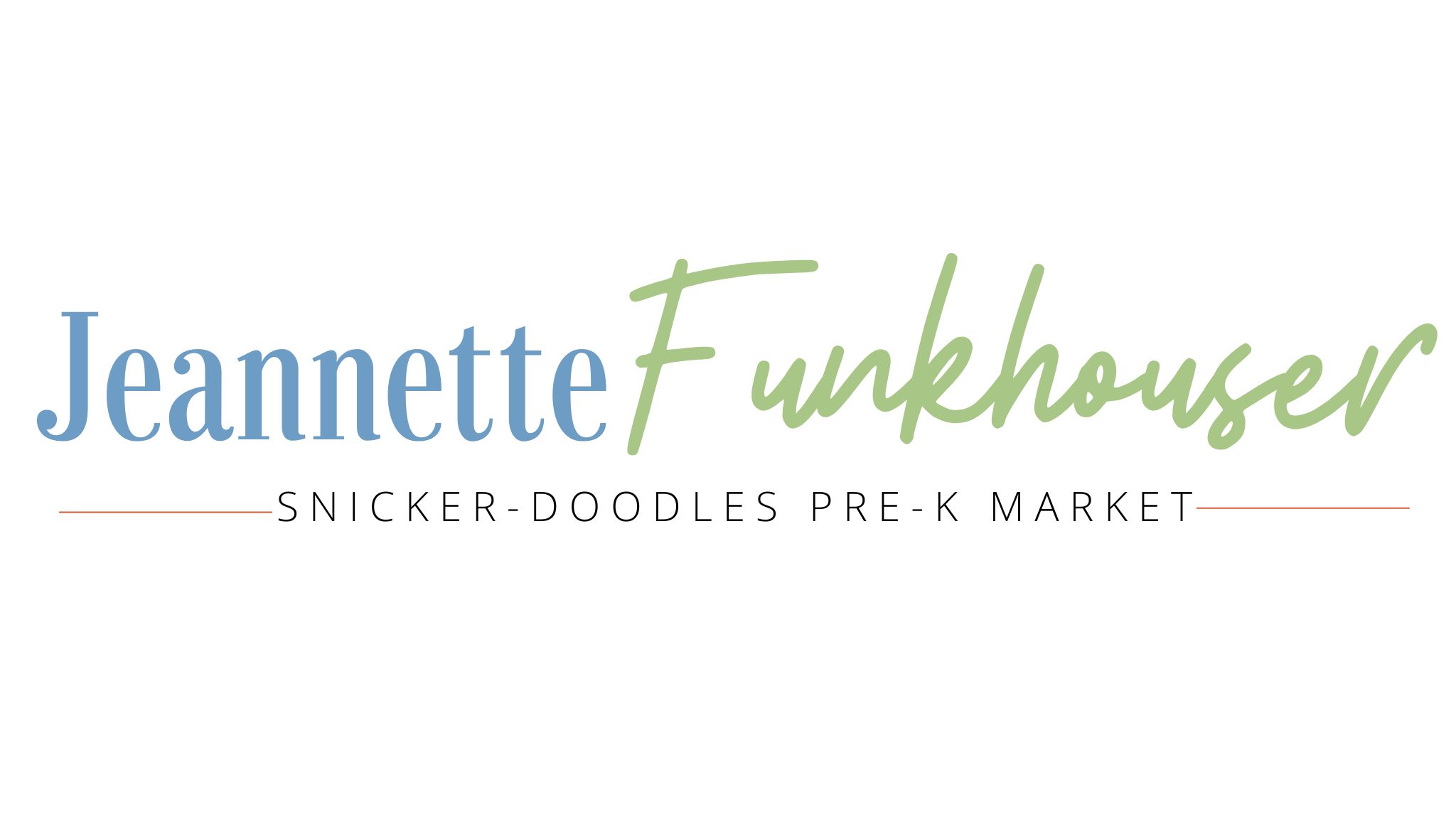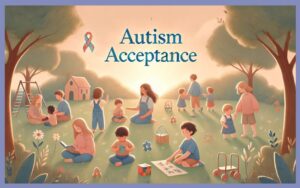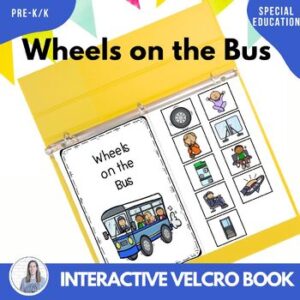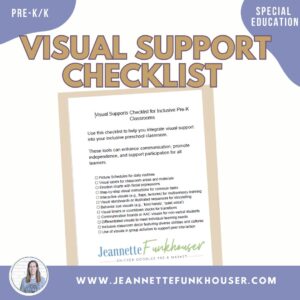Let’s be honest—preschoolers LOVE anything sticky, silly, and full of movement. That’s why “Icky Sticky Sticky Bubble Gum” is a classroom favorite! But this playful song is more than just fun—it’s packed with opportunities for meaningful learning across multiple domains.
As an early childhood educator, I’m always looking for ways to combine movement, language, and joy into one seamless experience. This song does just that! In this post, I’ll walk you through how you can use “Icky Sticky Sticky Bubble Gum” to build fine motor skills, support crossing the midline, and boost phonemic awareness—all while giggling and stretching. PLUS, you’ll get access to a free song poster and visuals to use in your classroom, therapy sessions, or homeschool routine.
 What Is the “Icky Sticky Sticky Bubble Gum” Song?
What Is the “Icky Sticky Sticky Bubble Gum” Song?
If you’ve ever heard preschoolers chant “icky sticky sticky bubble gum” at full volume, you already know the power of a good rhythm and rhyme. The magic is in the repetition and anticipation—kids can’t wait to find out which body part comes next!
In this version of the classic song, we level it up by incorporating:
- Body part identification
- Beginning sounds practice
- Crossing the midline
- Fine motor coordination
Here’s a quick example:
Icky sticky sticky bubble gum, bubble gum, bubble gum,
Icky sticky sticky bubble gum… sticking my hands to my…

We echo the beginning sound: “/h/ /h/ head!”
Then we all pull it off with a dramatic POP!
This repeatable structure builds confidence, encourages participation, and supports skill development in a multisensory way. It’s especially effective for young learners who benefit from movement and visual cues.
 What Skills Does This Song Target?
What Skills Does This Song Target?
You might think you’re just having silly fun—but “Icky Sticky Sticky Bubble Gum” actually checks a LOT of educational boxes. Let’s break them down:
1.  Fine Motor Development
Fine Motor Development
Wiggling fingers, pretending to “stick” hands to different body parts, and pulling them off with an exaggerated POP! all work the small muscles in the hands. These are the same muscles children use for:
- Holding a pencil or crayon
- Buttoning jackets
- Zipping backpacks
- Cutting with scissors

2.  Gross Motor Skills & Midline Crossing
Gross Motor Skills & Midline Crossing
When children reach across their bodies (like right hand to left knee), they’re building bilateral coordination and strengthening the neural connections between the brain’s hemispheres. Crossing the midline is crucial for:
- Writing fluidly from left to right
- Tying shoes
- Reading and tracking text across a page

3.  Body Awareness
Body Awareness
Naming and locating body parts is more than just vocabulary—it’s essential for developing:
- Spatial awareness
- Self-care routines (like washing hands or brushing teeth)
- Self-regulation and control
For children with sensory needs or communication delays, this song provides a concrete, predictable way to explore their own bodies and build confidence.

4.  Phonemic Awareness
Phonemic Awareness
Each new verse introduces a beginning sound—like /f/ for foot or /n/ for nose. This repeated, isolated sound practice is a fun way to build phonological awareness, which research shows is one of the strongest predictors of future reading success.

 Connect to Illinois Early Learning Standards
Connect to Illinois Early Learning Standards
This song isn’t just developmentally rich—it also aligns beautifully with key Illinois Early Learning and Development Standards (IELDS), including:
- Language Arts 1.B.ECb: Demonstrate understanding of words, sounds, and letters
- Mathematics 6.A.ECf: Verbally recite numbers from 1 to 10 (you can even sneak in counting backward between verses!)
- Physical Development 19.A.ECa: Engage in active play using gross motor skills
- Physical Development 19.B.ECb: Coordinate movements to perform complex tasks
- Self-Regulation 30.C.ECa: Exhibit engagement and sustained attention in activities
This makes “Icky Sticky Sticky Bubble Gum” a smart, standards-based choice for classroom implementation.
 Free Song Poster & Visuals for Teachers and Families!
Free Song Poster & Visuals for Teachers and Families!
To make this even easier to use, I’ve created a FREE song poster and movement visuals that you can print, laminate, and keep on hand for:
- Circle time
- Speech or OT sessions
- Movement breaks
- Rainy-day play indoors
These visuals are designed to:





 Easy Ways to Use This Song
Easy Ways to Use This Song
Looking for ways to stretch this activity even further? Here are some flexible, fun ideas to try:
 Morning Meetings
Morning Meetings
Start your day with smiles and movement. Use the song as a predictable transition into calendar time or your daily schedule.
 Brain Breaks
Brain Breaks
Use it to break up long stretches of seated work. The song lasts just a few minutes and resets attention beautifully.
 Speech & Language Sessions
Speech & Language Sessions
Target articulation, vocabulary, and social turn-taking. You can even adapt it for AAC users by using symbol cards or speech-generating devices.
 Station Rotations
Station Rotations
Set up a “sticky song” station where kids use visuals or puppets to act out the song on their own or with peers.
 Extend the Song
Extend the Song
Let kids invent new verses! Give them cards with body parts and starting sounds. Not only does this boost creativity, but it strengthens language and memory skills.

“Toes! /t/ /t/ toes!” POP!”
 Why It Works
Why It Works
Songs like “Icky Sticky Sticky Bubble Gum” work because they engage the whole child. That’s not just a catchphrase—it’s grounded in child development theory.
When children:
- Move with purpose
- Chant rhythmically
- Interact socially
- Use their imagination
…they’re building a brain-body connection that supports long-term learning. They remember better, participate more, and feel a stronger sense of belonging in the classroom community.
And from a teacher’s perspective? It’s quick to prep, easy to differentiate, and guaranteed to bring joy. That’s a win-win-win.
 Final Thoughts
Final Thoughts
Whether you’re a teacher, therapist, or parent, this simple movement song is a goldmine of learning. It blends fine and gross motor development, phonemic awareness, and social-emotional growth—all while keeping kids engaged and laughing.
Best of all, your students won’t even realize they’re building foundational skills. To them, it’s just a silly, sticky good time.
 Ready to Get Sticky?
Ready to Get Sticky?

 Get Moving with “Icky Sticky Sticky Bubble Gum”: A Fun & Educational Song for Preschoolers
Get Moving with “Icky Sticky Sticky Bubble Gum”: A Fun & Educational Song for Preschoolers



 Embracing Autism: Supporting Young Learners with Love and Understanding
Embracing Autism: Supporting Young Learners with Love and Understanding 





